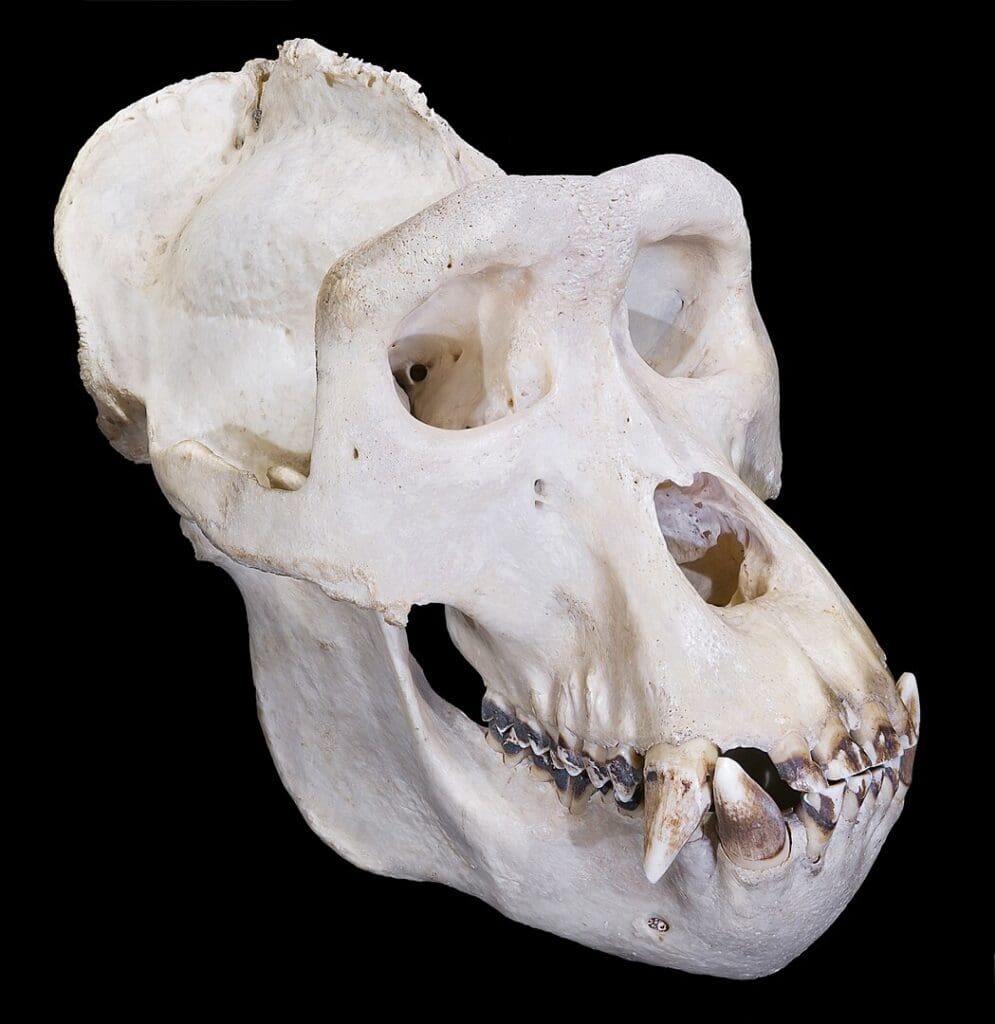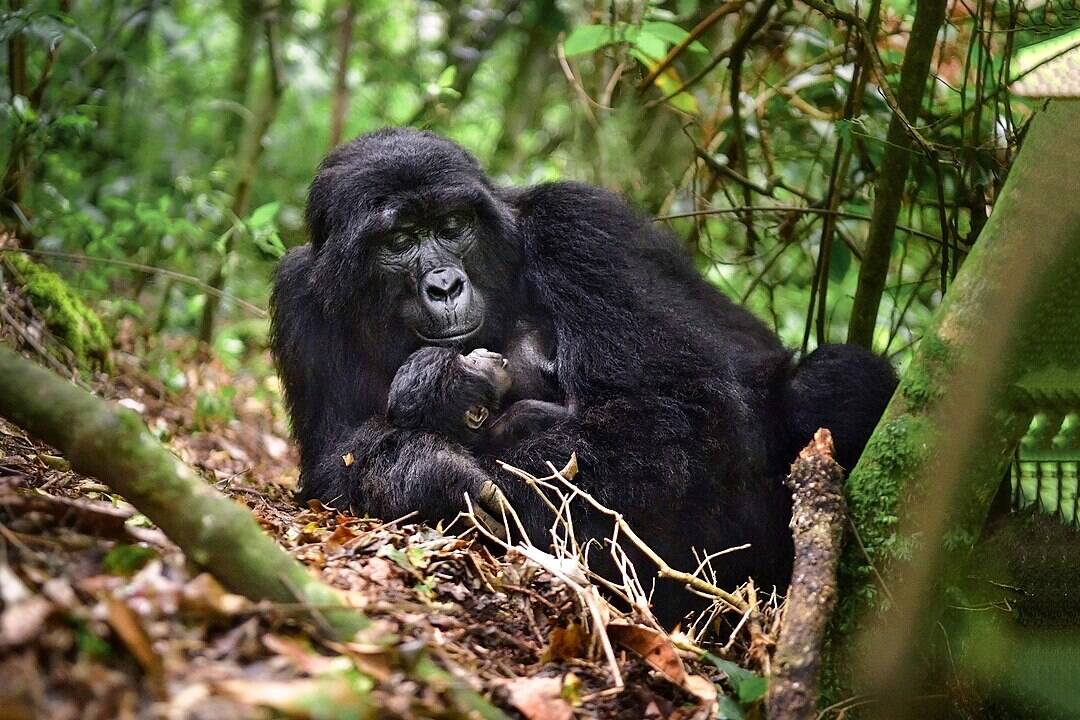Deep within the misty forests of Central Africa, one of nature’s most powerful creatures roams with an intimidating presence that belies a predominantly gentle demeanor. The gorilla, our closest living relative after chimpanzees and bonobos, possesses physical strength that has fascinated scientists, conservationists, and nature enthusiasts for generations. These magnificent great apes, with their muscular frames and distinctive appearance, demonstrate feats of strength that seem almost mythical to human observers. This article explores the remarkable physical capabilities of gorillas, the science behind their extraordinary power, and why these endangered primates continue to captivate our imagination.
The Anatomical Marvels Behind Gorilla Strength

Gorillas possess an anatomical structure specifically evolved for power. An adult male silverback gorilla can weigh between 300-485 pounds (136-220 kg) with a height of up to 5.9 feet (1.8 meters) when standing upright. What makes gorillas particularly strong is their muscular density and unique muscle fiber composition. Their muscle fibers are considerably thicker than human muscles, with a higher concentration of fast-twitch fibers that enable explosive bursts of strength. Additionally, gorillas have a muscle-to-fat ratio that far exceeds that of humans, with body fat percentages typically ranging from 5-15% compared to 15-20% for fit human males.
Measuring the Power: Just How Strong Are Gorillas?

Quantifying gorilla strength has been challenging for researchers, but conservative estimates suggest an adult silverback can lift approximately 1,800 pounds (815 kg) – nearly ten times their body weight. To put this in perspective, the strongest human weightlifters can lift approximately 2-3 times their body weight in controlled conditions. Gorilla strength is particularly evident in their arms, which have been estimated to be about 6-10 times stronger than those of an average human. This incredible power allows gorillas to tear down small trees, rip apart bamboo stalks, and effortlessly climb through their forest environments. Some researchers believe a gorilla’s grip strength could exceed 1,300 pounds of force, making their hands formidable tools for both survival and defense.
The Evolutionary Advantage of Strength

Gorilla strength has evolved over millions of years as an adaptation to their ecological niche. Their impressive musculature serves multiple evolutionary purposes, including feeding, mate competition, and predator defense. As primarily herbivorous creatures, gorillas spend up to 8-10 hours daily foraging and consuming plant material. Many of their preferred foods, such as bamboo and tough-stemmed vegetation, require significant strength to break down. This constant interaction with resistant plant material has driven the evolution of their powerful arms and jaw muscles. Additionally, male silverbacks use displays of strength in social hierarchies, with dominant males protecting their family groups from potential threats, including rival silverbacks or rare predators like leopards.
The Science of Muscle Mechanics in Gorillas

The extraordinary strength of gorillas stems from several key biological factors. Their skeletal structure is designed to support powerful musculature, with attachment points for muscles optimized for maximum force generation rather than the fine motor control that characterizes human anatomy. Gorillas also benefit from a larger proportion of type II muscle fibers (fast-twitch) compared to humans, which provide explosive power at the expense of endurance. Another fascinating physiological feature is the gorilla’s neuromuscular control system. Humans have evolved to use approximately 65% of their muscle potential in normal circumstances (with adrenaline allowing for brief increases), while gorillas routinely utilize a much higher percentage of their muscle capacity. This difference partly explains why a 400-pound gorilla can generate force far exceeding what a 400-pound human athlete could produce.
Daily Demonstrations of Gorilla Power

In their natural habitat, gorillas regularly showcase their incredible strength through everyday activities. They can effortlessly uproot small trees up to 4 inches in diameter to access their preferred foods or clear paths through dense vegetation. Bamboo, which contains silica making it almost as hard as steel, is torn apart with minimal effort by gorillas seeking the tender shoots inside. When building nests, which they do daily, gorillas bend and break branches up to 2 inches thick to create comfortable sleeping platforms. Perhaps most impressively, during displays of dominance or when threatened, silverbacks can tear down sizeable trees, hurl objects weighing over 100 pounds, and deliver blows powerful enough to deter even the most determined predators. What makes these feats more remarkable is that gorillas accomplish them without appearing to exert maximum effort.
The Chest-Beating Display: Power and Communication

One of the most iconic demonstrations of gorilla strength is the chest-beating display. When a silverback gorilla rises to his feet, beats his chest with cupped hands, and roars, he creates a sound that can carry for over a mile through dense forest. The impact force generated during these displays has been measured at levels that would cause significant injury to humans. However, gorillas’ specialized chest anatomy, including thicker skin and muscle padding, allows them to perform these powerful displays without harm. This behavior serves multiple purposes: establishing dominance, warning rivals, impressing females, and defining territorial boundaries. The chest-beating sequence perfectly encapsulates the dual nature of gorilla strength – immensely powerful yet precisely controlled.
Comparing Gorilla Strength to Other Powerful Animals

In the animal kingdom’s strength Olympics, gorillas rank among the elite performers. Pound for pound, they outmatch most land predators, including lions and tigers, in upper body strength. Their nearest competitors in primate strength are orangutans, which possess extraordinary arm strength due to their arboreal lifestyle. Chimpanzees, despite being smaller, are also remarkably strong, with some studies suggesting they may have even greater pound-for-pound strength than gorillas in certain measures. Outside the primate order, animals like grizzly bears rival gorillas in overall power, with the ability to flip 700-pound rocks with ease. Elephants and rhinoceros exceed gorillas in absolute strength due to their massive size, while smaller creatures like dung beetles can lift over 1,000 times their body weight. However, gorillas remain unique in combining immense power with dexterity, intelligence, and social complexity.
Gorilla Species and Strength Variations

There are two gorilla species – eastern gorillas (Gorilla beringei) and western gorillas (Gorilla gorilla) – divided into four subspecies: eastern lowland, mountain, western lowland, and Cross River gorillas. Each subspecies displays variations in size and strength. Mountain gorillas (Gorilla beringei beringei) are generally the most powerful, with adult males averaging 430 pounds. Their adaptation to high-altitude environments with cold temperatures has resulted in larger, more muscular builds with thicker fur. Western lowland gorillas (Gorilla gorilla gorilla), the most numerous subspecies, are slightly smaller but possess remarkable agility alongside their strength. Cross River gorillas (Gorilla gorilla diehli), the most endangered subspecies with fewer than 300 individuals remaining, are similar in strength to western lowland gorillas but have distinct skull and tooth morphology that may affect their biting force.
The Gentle Giants: Strength with Restraint

Despite their formidable power, gorillas are predominantly gentle creatures. Renowned primatologist Dian Fossey described them as “dignified, highly social, gentle giants with individual personalities and strong family bonds.” This characterization highlights the remarkable contrast between their physical capabilities and typical behavior. Gorillas rarely use their full strength except in the most extreme circumstances, such as defending their family groups from serious threats. In fact, gorillas are considered among the least aggressive of the great apes, preferring to avoid conflict through intimidation displays rather than actual combat. Their social structure emphasizes cooperation and cohesion rather than confrontation. This combination of immense power with temperamental restraint makes gorillas particularly fascinating subjects for behavioral studies and challenges popular misconceptions perpetuated by sensationalized media portrayals.
Strength in Captivity vs. Wild Gorillas

Interesting differences emerge when comparing the strength of wild gorillas to those living in captivity. Wild gorillas typically demonstrate greater overall strength due to their active lifestyle, which includes climbing, foraging across large territories, and building nests daily. They develop functional strength through natural movements rather than repetitive actions. Captive gorillas, while still immensely powerful, may show reduced strength in certain areas due to decreased activity levels and different dietary patterns. However, zoos and sanctuaries have made significant strides in creating enriched environments that encourage natural behaviors and muscle development. This includes complex climbing structures, puzzle feeders that require manipulation, and scattered feeding techniques that promote foraging behaviors. These efforts help maintain healthier, stronger captive gorillas while providing valuable research opportunities to better understand gorilla physiology and behavior.
Conservation Challenges: Protecting Nature’s Powerhouses

All gorilla subspecies are classified as either endangered or critically endangered according to the International Union for Conservation of Nature (IUCN). This precarious status stems from multiple threats, including habitat loss, poaching, disease, and armed conflict in their native ranges. The loss of these magnificent creatures would not only represent the extinction of one of the planet’s strongest animals but also a significant blow to forest ecosystems. Gorillas play crucial ecological roles as seed dispersers and vegetation managers, with their feeding habits helping to maintain forest structure and diversity. Conservation programs have achieved some success, particularly with mountain gorillas, whose population has increased from approximately 620 individuals in 1989 to over 1,000 today. However, continued efforts are essential to ensure these powerful primates remain in their natural habitats for generations to come.
The extraordinary strength of gorillas represents one of nature’s most impressive physical adaptations, combining raw power with precise control and remarkable restraint. These gentle giants, capable of feats that would be impossible for even the strongest humans, remind us of the incredible diversity of adaptations that have evolved on our planet. Yet despite their physical power, gorillas remain vulnerable to human activities, with all subspecies facing significant conservation challenges. Their story is a poignant reminder that even the strongest creatures can be fragile in the face of habitat destruction and exploitation. As we continue to study and understand gorilla strength, we must also strengthen our commitment to protecting these magnificent animals and the ecosystems they inhabit, ensuring that future generations can continue to be awed by these remarkable beings.
- 12 Snake Species That Can Kill in One Bite - August 10, 2025
- The World’s Most Expensive Dog Breeds - August 10, 2025
- Why Dalmatians Might Be America’s Most Misunderstood Dog - August 10, 2025

